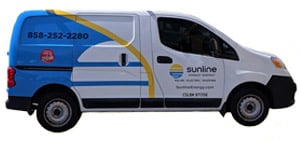***UPDATE 2021***The current federal solar tax credit guidelines have been extended through 2022. President Trump signed the Consolidated Appropriations Act, 2021 on December 2020. That’s fantastic news for any Southern Californian homeowner and/or business owners interested in getting a solar power system in the next couple of years.
For more information visit seia.org for guidelines and how the tax credit works.
In 2005 the U.S. Government first offered solar tax credits to incentivize homeowners to transition to cleaner energy sources. Due to its increasing popularity the program was extended time and time again. However, all good things must come to an end and for the Federal solar tax credit the beginning of the end starts in 2020.
The Fed offers two different tax credits to incentivize solar investments. One is for businesses to invest in solar (Investment Tax Credit), while the other is for homeowners (Section 25D Residential Solar Energy Credit). Both credits offer similar benefits, and both will see a reduction in credit from 30% to 26% at the start of 2020. Nevertheless, if you are still in the process of going solar there are some critical distinctions to be aware of.
Businesses have a “safe harbor” provision, which allows a business to lock in the credit at 30%. This is on the basis that a project “commences construction” in 2019 and is completed before 2024. This does not apply to residential homeowners; they will see the normal reduction in credits applied to their systems going forward. If you are a residential homeowner, here’s what you need to know:
If you buy your system outright (pay cash or finance with a loan)
To receive the entire 30% residential Federal solar tax credit your system must be “placed in service” before 2020. You are not eligible to use the “commence construction” safe harbor provision. According to the tax rules your costs are not incurred until the system installation is complete. The credit will reduce from 30% to 26% in 2020, 26% to 22% in 2021, and finally 0% in 2022.
If you buy a newly built home with solar and own the system outright
The year you move into your new home is when your credit eligibility begins. Costs typically are treated as incurred when the original solar energy system is installed. If the new home is constructed and a new solar energy system is purchased, then the costs are not treated as incurred until the taxpayer starts living in the house.
If you lease the system purchase electricity through a “power purchase agreement” (PPA)
The company that is leasing the system or offering the PPA is the one who can claim the tax credit. As a homeowner you are not eligible to claim this credit, as you do not own the system. The company which provides the system instead claims the system, which allows them to offer a better lease or PPA terms to you.
Get your solar tax credit with Sunline while you still can – contact us today for a free consultation. Sunline Energy is one of the most trusted solar companies in San Diego. You can read our customer testimonials here.
California Solar + Storage Association
Solar Energy Industries Association


I’m really happy that they extended the 26% it makes a difference. I’m planning on expanding and adding a couple of batteries for fire season. Living in socal and dealing with fires is not fun, so I want to be prepared for myself and my family. Those days are stressful and scary, not having electricity is even worse. If we can have a peace of mind during those times, spending money on this will be worth it.
I took my sweet time not realizing the install would take a while because of permits. I also had to do a partial reroof so that added more time. Thankfully, they extended it. I was relieved and you are right the 26% is totally worth it. Can I ask what batteries did get? Enphase or tesla?
Hi Rich, I got tesla powerwalls still waiting on them to be installed because of production being too slow. No matter where you try and get them it won’t be right away. The enphase enlighten was actually pretty good too but we are choosing to wait. I guess it all depends on what you want and looking for.